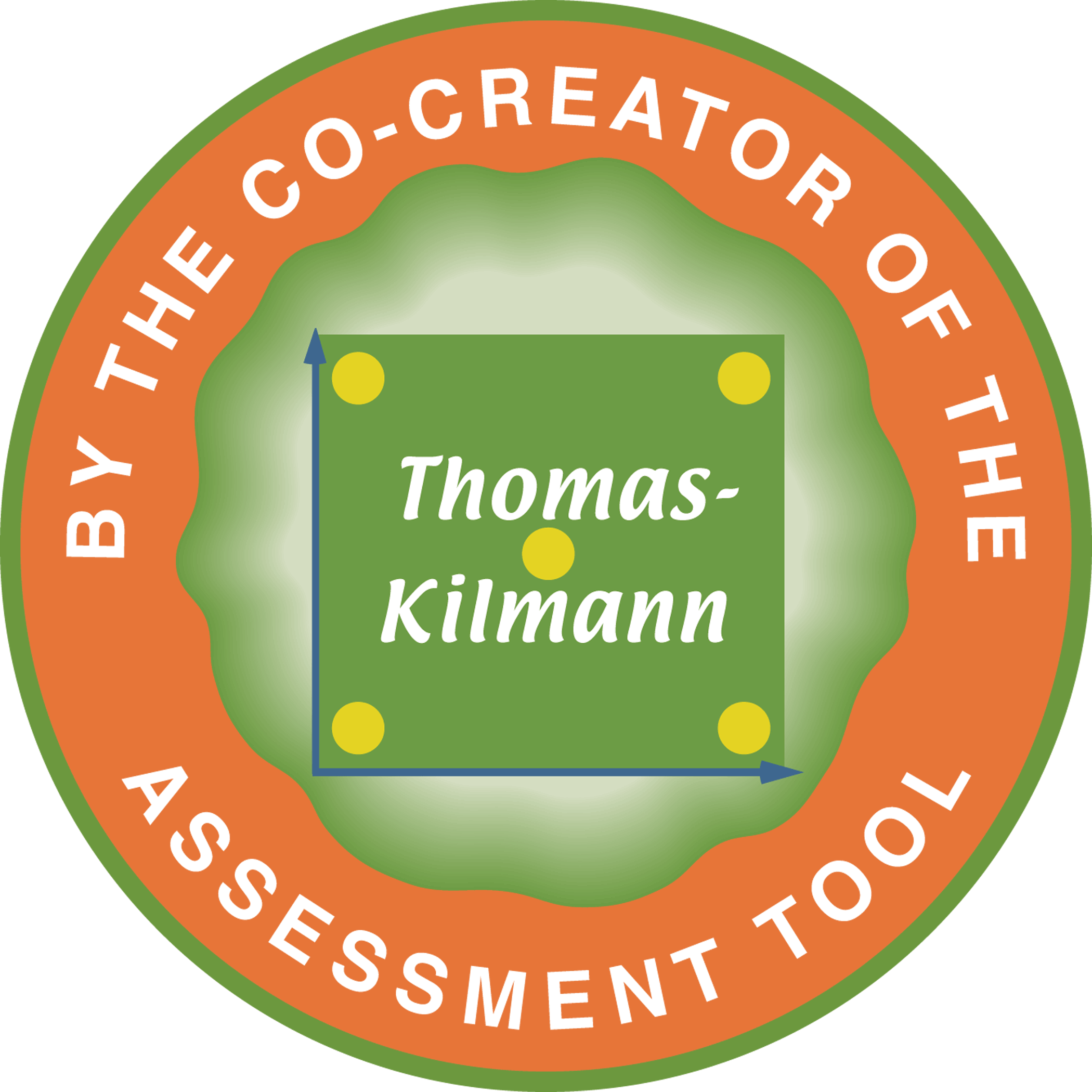17 Jun Collaborating: The Most Complex and Least Understood Conflict Mode
Ralph H. Kilmann, co-author of the Thomas-Kilmann Instrument (TKI)
Even though the collaborating mode sounds ideal to most people, it can only be used successfully under the right conditions. In fact, there are more conditions that affect the choice of collaborating than any other conflict mode.

To begin with, if people are faced with overwhelming stress, they won’t have the mental clarity to engage in a productive dialogue about what each person underlying concerns. As a result, they will find one of the other modes more suited to the high-pressure situation. Only if the stress is stimulating, inviting, and manageable can the collaborating mode possibly result in a win-win outcome.
Moreover, often overwhelming stress gives the impression that there is too much to do with so little time. With collaborating, however, it takes time for people to explore and then express what they really need and want. Thus, only use collaborating when you have the time (or can take the time) for a collaborative conversation.
If the apparent incompatibility between people is unidimensional (such as a tug of war between union and management concerning whether the hourly wage should be twelve or sixteen dollars), using the collaborating mode may be a big waste of time. The whole debate will surely hinge on whether one wage is more deserved versus cost-effective than another (somewhere between the twelve and sixteen dollar rate). In the end, one position will be chosen over the other (with competing and accommodating) or an in-between solution will only partially satisfy each party (with compromising).
Yet, if the single issue in a proposed wage agreement can be expanded into something multidimensional (to include, for example, working conditions, flexible work time, participation in the decision-making process, and greater opportunities for taking educational programs), using the collaborating mode has the best chance to create a fully satisfying package for all concerned: An hourly wage on the economical side of the debate (say thirteen dollars an hour) may be more than compensated (in the union’s eyes) by a specific and enforceable plan to improve the quality of work life, which has features that mean a lot to the workers. A creative package of both intrinsic and extrinsic rewards (because of its multidimensional nature) can therefore result in a win-win agreement between union and management.
Because collaborating requires an open, candid, and creative exchange among those whose needs, at first, appear to be incompatible, the relationship between people must be based on trust, which must also be supported by a corporate culture that encourages the same. Moreover, the reward system must have a history of rewarding people for expressing their real concerns as opposed to a legacy of critical incidents where employees have learned that people who had challenged the status quo later received a poor performance review (or even an abrupt dismissal). As a result, using the collaborating mode can be personally dangerous if it is not based on a trustworthy culture and reward system.
And, as I mentioned in a previous blog, to use collaborating effectively also means that people must communicate (verbally and non-verbally) in ways that fully respect and honor one another. But if people don’t have the interpersonal skills to discuss differences in a non-defensive-producing manner, any attempt at collaborating will likely fail. Especially since this mode, by definition, may require people to share their innermost feelings with one another (and actively listen when others are sharing theirs), a higher level of interpersonal skills is needed with collaborating than with any of the other conflict modes.
In the end, although the collaborating mode has the potential to fully satisfy all persons involved in a conflict, it is important to understand when, and under what conditions, this integrative mode has the best chance to realize its promise.
Kilmann Diagnostics offers a series of eleven recorded online courses and nine assessment tools on the four timeless topics: conflict management, change management, consciousness, and transformation. By taking these courses and passing the Final Exams, you can earn your Certification in Conflict and Change Management with the Thomas-Kilmann Instrument (TKI). For the most up-to-date and comprehensive discussion of Dr. Kilmann’s theories and methods, see his 2021 Legacy Book: Creating a Quantum Organization: The Whys & Hows of Implementing Eight Tracks for Long-term success.





